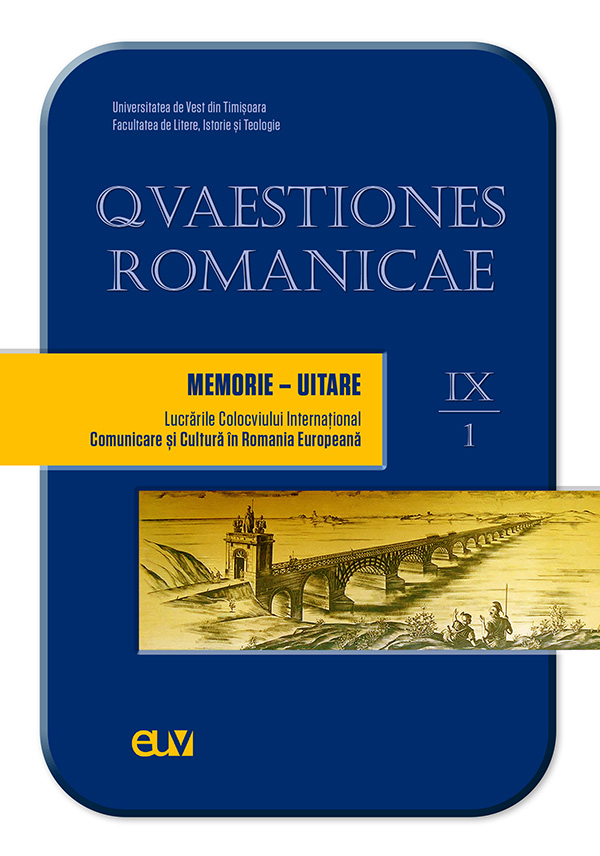Per ricordare Caravaggio: Il dono di saper vivere vs. Fluturele negru
Abstract: (Remebering Caravaggio: Il dono di saper vivere vs. Fluturele negru) The present work aims to make a comparative analysis between two contemporary novels that propose the figure of the genius of Baroque painting that was Michelangelo Merisi called Caravaggio as we celebrate in 2021 450 years since his birth. The novels are: Il dono di saper vivere by Tommaso Pincio published in 2018 by Einaudi and the novel Fluturele negru by the Romanian prose writer, Radu Paraschivescu, published by Humanitas in 2010 and republished in 2019. These are two very different novels, but united by an extremely interesting narrative structure and by the fact that both stories, even if they don’t pretend to be novels about Caravaggio or biographical books, they both take the figure of the great painter and his complicated times and bring it back to the present in a new light. In different languages and different but somewhat similar styles, the two novels are witnesses of a past collective memory reconstructed from paintings, legends, myths, chronicles on the life of the seventeenth century that rewrite with a new language, a rhythm and a present liveliness that make us remember the charm of painting and of life of the Baroque century.
Keywords: Caravaggio, collective memory, Baroque, contemporary novel, narrative structure.
Riassunto: Il presente lavoro si propone di fare un’analisi a confronto tra due romanzi contemporanei, che ripropongono la figura del genio della pittura barocca che è stato Michelangelo Merisi detto Caravaggio, di cui festeggiamo nel 2021 i 450 anni dalla nascita. Si tratta del romanzo Il dono di saper vivere di Tommaso Pincio uscito nel 2018 presso la casa editrice Einaudi e del romanzo Fluturele negru del prosatore romeno Radu Paraschivescu, uscito presso la casa editrice Humanitas nel 2010 e ristampato nel 2019. Sono due romanzi molto diversi, ma accomunati da una struttura narrativa estremamente interessante e dal fatto che, tutte e due le storie, anche se non sono necessariamente due romanzi su Caravaggio, oppure due opere biografiche, prendono la figura del grande pittore e dei suoi tempi complicati e la riportano nel presente in una luce nuova. In lingue e in stili diversi, ma in qualche modo simili, i due libri sono testimoni di una memoria collettiva passata tratta da quadri, leggende, miti, cronache sulla vita del Seicento, periodo che rivestono di un linguaggio nuovo, di un ritmo e di una vivacità attuali e ci fanno ricordare il fascino della pittura e della vita del secolo del Barocco.
Parole chiave: Caravaggio, Barocco, memoria collettiva, romanzo contemporaneo, struttura narrativa.
